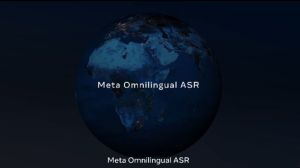This stunning ‘cosmic butterfly’ event captured by ESO telescope has netizens mesmerised
Named for its resemblance to a butterfly, the space phenomenon is known as NGC 2899, is actually a planetary nebula- a giant cloud of gas that forms around an unexploded star.
 The phenomenon is located between 3000 and 6500 light-years away in the Southern constellation of Vela. (Picture credit: Twitter/ ESO)
The phenomenon is located between 3000 and 6500 light-years away in the Southern constellation of Vela. (Picture credit: Twitter/ ESO)
The European Southern Observatory recently captured a rare celestial object with its Very Large Telescope (VLT) and its images have left netizens mesmerised. The picture is of a massive bubble in deep space that is in the shape of a butterfly and is surely a treat to the eyes.
The phenomenon, known as NGC 2899, is actually a planetary nebula — a giant cloud of gas that forms around an unexploded star. Shared by ESO on Twitter, the phenomenon has an intricate pattern and stunning colour combination of blue, purple and violet.
“Resembling a butterfly with its symmetrical structure, beautiful colours, and intricate patterns, this striking bubble of gas, NGC 2899, appears to float and flutter across the sky in this new picture from our VLT,” ESO wrote on Twitter.
Take a look at some of the reactions here:
Magnific!
— Satyá (@Shivani__22) July 31, 2020
You look at all that and wonder how many lifeforms are out there, especially intelligent ones. For when you’re looking for ‘intelligent life’ don’t look at the Earth, there’s very little intelligence if any here.
— ClearChannel (@channel_clear) July 31, 2020
Woooooowwww!!!!
— Dre@myNubi@n (@PBoogie11) July 31, 2020
#SpaceButterfly least one beautiful thing happened this year. 🦋 pic.twitter.com/joyCwwdU3X
— Prachi (@prachi_pareek_) August 1, 2020
A picture of Space butterfly captured by Astronomers, located b/w 3000 and 6500 light years in vela.❤️ pic.twitter.com/b1lIRRgOq2
— Baljeet singh (@baljeet_officia) August 1, 2020
Stunning Space Butterfly Captured by ESO Telescope https://t.co/aboftyLvNs – in ESO News pic.twitter.com/GOCCLVn5pX
— Rafael Bachiller (@RafaelBachiller) July 30, 2020
The beauty of God’s creation
— أمين (@ajameeri) August 2, 2020
So Gas looks good.
— Aksh (@Aksh84053480) August 2, 2020
The bubble of gas reportedly stretches over two light years from its centre, reaching a temperature of over ten thousand degrees.
According to ESO, the phenomenon, which is located between 3000 and 6500 light-years away in the southern constellation of Vela has never been captured with such striking details. Along with the highly-detailed photo of the celestial event, ESO also released a video of zooming into the planetary nebula NGC 2899 among a million stars.





- 01
- 02
- 03
- 04
- 05


























